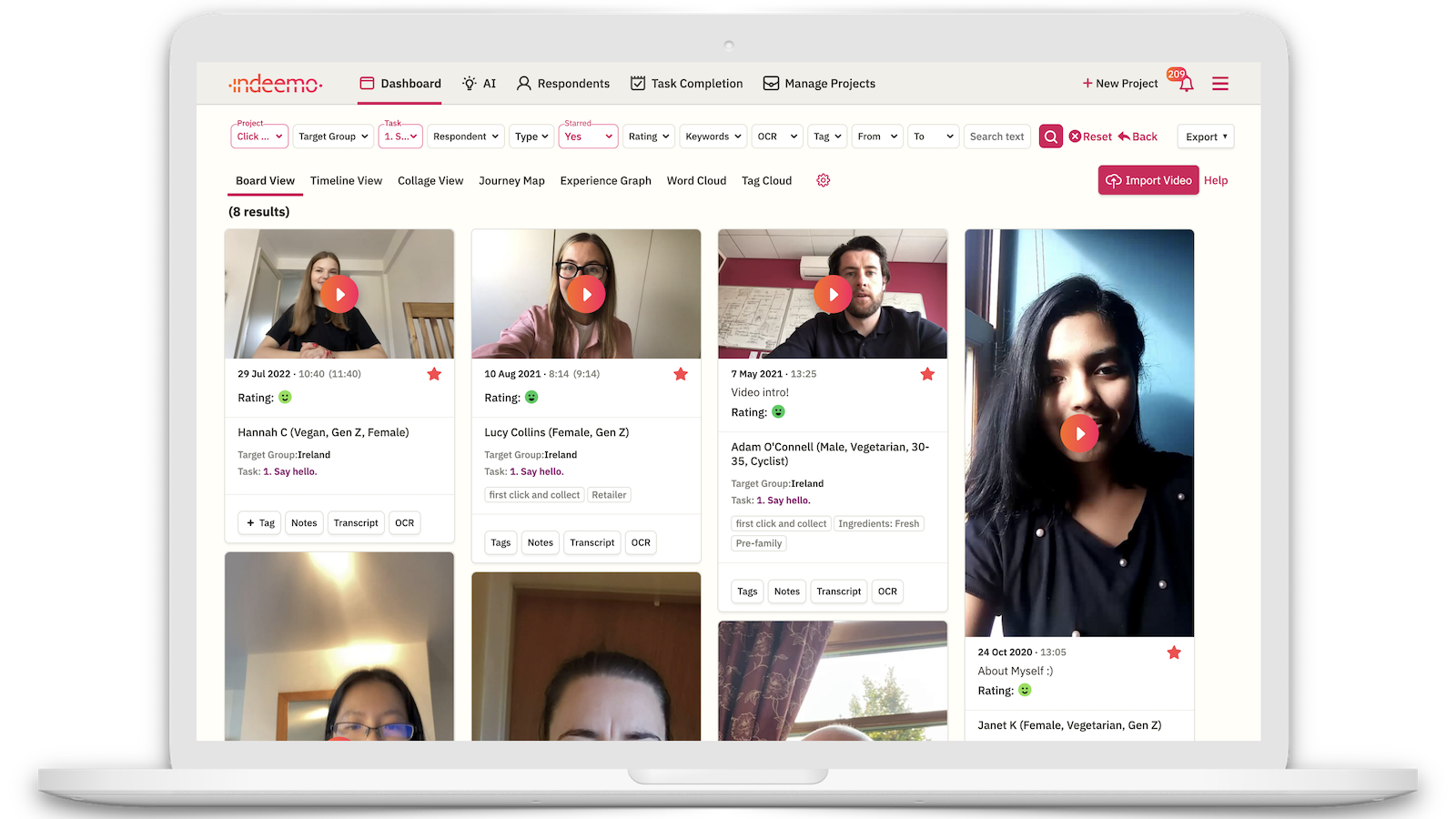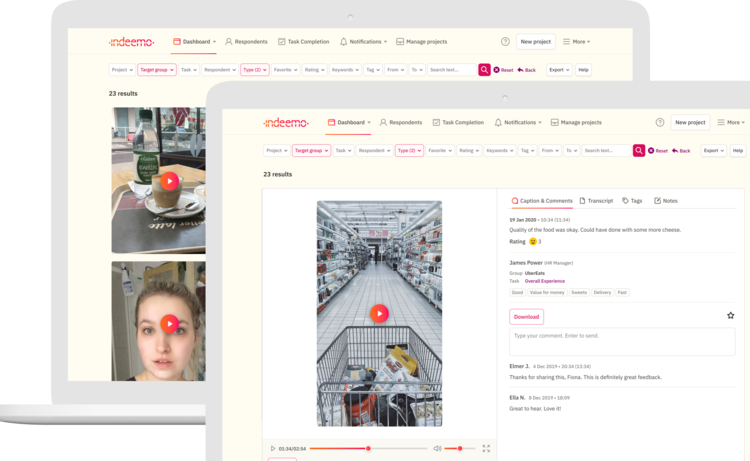What is Autoethnography and what tools can you use to conduct it?
Hybrid work and Digital transformation have transformed ethnographic research.
Before hybrid work, travelling all over the world to spend time observing research participants in their every day context was the norm. This is no longer the case. We have all gotten used to working from home and the appetite for spending days travelling and wasting time in transit has massively waned.
Secondly, digital transformation (and the resultant shift to customer centricity) have resulted in the digital disruption of every customer experience and customer journey to the point where, we believe, from now on, every customer journey will be partially if not entirely digitally enabled and certainly omni-channel.
Both of these factors combined mean that it is no longer possible to understand peoples needs, behaviours and experiences across multiple contexts (home, work, in-store, online) and across multiple channels (search, social, mobile, desktop) using traditional, observational, in-person, ethnographic research.
This is what’s driving the significant growth in Autoethnography.
What is Autoethnography?
Autoethnography (sometimes referred to as Mobile Ethnography or even Digital Ethnography), is a self ethnographic research method where the research participant uses self reflection to record thoughts, feelings, behaviours and experiences through a first-person perspective usually using a purpose built Mobile Ethnography app or Digital Ethnography platform.
As a form of ethnographic research (which itself has it's origins in cultural anthropology), instead of having an independent researcher present to record observations of how people behave, with autoethnography, the research participant records their own behaviours and experiences.
What are some autoethnography examples?
Service design research or Service Safari Research are some examples of autoethnography in modern day practice.
The power of this research emehodology in service design is another factor driving the growth in Autoethnography . It is one of several research methodologies recommended by the “This is Service Design Doing” authors for use by Service Designers and UX researchers.
Autoethnographic research is increasingly conducted in Service Design. In short, service design helps streamline the internal organization’s workflows to provide maximum efficiency for internal operations as well as for the customer touchpoints.
Autoethnography is an agile, qualitative research method that helps you remotely uncover context rich insights to either surface needs or validate hypotheses. The context rich, in-the-moment insights is surfaces provide the evidence based foundation for deliverables such as Customer Journey Map and Service Blueprints
The benefits of using Autoethnography tools
Autoethnography has been traditionally conducted in person. A researcher would typically go on-site to conduct the ethnographic study, take copious field notes and then return to the office and reflect on their experience.
With the advancement of smartphones, video and cloud technologies, it is now possible to use purpose built autoethnography tools and platforms which allow researchers to conduct autoethnography research studies virtually and remotely.
Mobile ethnography tools leverage personal technology like Smartphones to help streamline data collection by capturing notes, photos, videos, recordings, and any other deliverables that can be recorded digitally. All these findings are captured, stored, and shared out of a single platform. This data collection method is not only efficient for the researchers, but the secure packaging and provisioning settings make it easy to share content with other researchers, designers, and stakeholders.
Autoethnography research method design
Much like any other ethnographic research method, it’s important to start planning for your autoethnography study with the research goal in mind.
Scoping out an area of research upfront will help tailor the study. Decide if the study will focus on a full journey or a specific portion of it. This is also the time to focus on the deliverables you would like to have produced from the findings.
Autoethnography data collection types
Typically, autoethnography findings will be recorded in numerous ways: notes, photos, videos, or screen recordings. For longer studies, diary studies can be an effective recording technique.
In traditional ethnography, there are two types of ethnographic studies: overt studies, where researchers disclose their identity while on onsite, and covert studies, studies where researchers do not disclose their identity during documentation.
Covert studies have the advantage of eliminating “observer effect”, or the ability to not bias their surroundings or the actions of others while onsite. However, capturing insights on others without their consent can have serious repercussions if proper steps are not followed. Legal agreements are strongly recommended when gathering footage and notes on participants during studies.
Autoethnography however involves the explicit consent of the research participant and avoids the researcher effect - a change in behaviour as a result of the researcher being physically present.
How do you conduct Autoethnography research?
Autoethnography is easier than you might think. Recruitment of participants is the same as recruiting for traditional ethnographic research of focus groups for example. Respondents are sourced and screened and incentivised to take part. Instead of paying them for a single 2-4 hours single context visit, the 2-4 hours of time input takes place over a series of days across multiple contexts.
When conducting an autoethnography study, respondents are typically assigned tasks which instruct them to record certain behaviours or show you how they complete different tasks. Tasks can also be attitudinal in nature where participants can be asked to record their thoughts, feelings or reflections on certain topics using selfie videos.
Mobile ethnography tools are very powerful for autoethnography as they enable participants to record themselves in-the-moment and in their every day contexts. This always ensures that the data being captured ic both type 1 and contextual in nature. This results in rich, raw and real insights that can reveal unmet needs and unconscious behaviours.
Having one platform to record seamlessly collate and organise findings, Researchers can use video transcription, automated keyword analysis tools and tags to analyse and synthesize the data. Furthermore, collage and timeline tools bring participants to life in a visually rich manner across multiple real world contexts that is impossible to capture using traditional research approaches.
Finalizing and reporting your autoethnography research
Finally, when the data is synthesized and the analysis complete, a research report is written. This is typically delivered in a multimedia format such as powerpoint with embedded images and videos.
Thematic analysis is typically used and the researcher codes the raw data into themes, concepts or topics and uses quotes, images or video excerpts to evidence their findings.
Modern auteothnography platforms has a auite of tools to make it easy for filter, analyse and export your findings.
The artefacts collected can be referenced in the report and linked out to. Mobile ethnography improves this experience by providing a single repository for all the content with permission settings that allows other researchers and stakeholders to access the artefacts and insights they need. This is massively impactful at building empathy across the entire organisation.
Let us support your next autoethnography project
In summary, autoethnography can be a great tool to gain additional insights or validate concepts. It is especially powerful in service design. This process does not need to be incredibly expensive nor time-consuming. Autoethnography tools can transform and streamline the data gathering process along with synthesis and content sharing and in doing so, massively reduce costs and produce richer, more contextual findings.
Testimonial: what our customers like about us
Check out what our customers say about us on G2 Crowd
Marc E.
“Using Indeemo added tremendous value to the project, which made our clients happy”
Posted on G2



